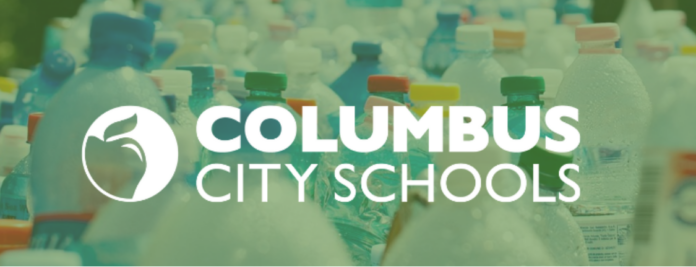This write-up by the Columbus City Schools highlights what students in the area are doing in relation to the environment and sustainability. This gives me a good grasp of what they are teaching in schools in relation to this broader topic.
“Ohio’s Largest Public School District Leading the Way as Environmental Stewards” Excerpt
“Every week, Columbus City Schools serves more than 47,500 breakfast meals and 92,500 lunches which is one of the reasons recycling and sustainability are priorities for the District’s Food Service team. For the last ten years, CCS has partnered with the Solid Waste Authority of Central Ohio (SWACO) on several initiatives including the implementation of a green team of students who become “leaders for change at their schools.”
These groups ensure recycling and composting lunch scraps and implementation of a refuse sorting system inside the cafeteria. Indianola K-8 was especially highlighted for its work in engaging students on litter cleanups, food gardens, composting, recycling, and water conservation. Another school within Columbus City Schools is also working towards that same environmental certification that Indianola K-8 received.
Funding from SWACO has also provided water bottling filling stations in 23 school buildings to reduce the dependency and impact of single-use water bottles being thrown away after one use.
“We will have lesson plans for teachers to utilize in the classrooms to educate our youngest students on the importance of saving our planet,” said Christine Weatherholtz, Farm to School/Nutrition Educator at Columbus City Schools. “These refillable water stations are one more piece of the sustainability puzzle of educating our students on how to be environmental champions.”
The other puzzle piece includes a Teen Eco Summit with the Columbus Zoo and Aquarium planned for November 2021. Students in grades 10 – 12 will focus on sustainable foods, plastic reduction, energy use, composting, and habitat restoration.
Columbus City Schools owns 50 acres of land where it operates the Spruce Run Environmental Education Center, a unique place for environmental studies and outdoor learning. At Spruce Run, after lunch, all waste is placed in proper recycling containers. Milk cartons are reused as seed starter containers, and the uneaten fresh fruits and vegetables are left in an open field for wildlife or placed in composting bins.
In 2017, Columbus City Schools received a Community Block Grant to focus on recycling and environmental education. The District developed lesson plans and provided the book Michael Recycle by Ellie Bethel for every third grade student in all 75 elementary schools. In 2019, the environmental adventure was extended to include a second book for every third grade student, titled Michael Recycle Meets Litterbug Doug also written by Ellie Bethel.
To reduce the amount of paper waste, Columbus City Schools partners with an online electronic platform called Peachjar, which has significantly cut down on the number of hand-outs and fliers for parents that often end up at the bottom of many backpacks. Peachjar has saved Columbus City Schools from printing roughly 37 million sheets of paper… which is about 4,500 fewer trees.
“We teach our students they can change our environment because it belongs to all of us,” Dr. Dixon said. “At Columbus City Schools, it is never too early to learn how to become an environmental change agent. We teach lessons in sustainability that begin at Columbus City Schools but doesn’t end there.” (Ohio’s largest public school district 2015).
.
REVIEW
This article is a write-up from the Columbus City Schools which discusses their efforts to reduce environmental impact in the schools and also briefly how they educate in the classroom. After reading the learning standards on the Ohio Department of Education’s website, I neglected to see anything explicitly discussing the environment or sustainability education. Columbus City Schools has a few write-ups, this one being the latest. I thought this explicit lack of formal guidelines interesting and shows the perspective the schools have on the issues, considering they do have formal guidelines for things like math and even social awareness. This viewpoint of how the educators of the Columbus area teach their kids is a good look into the base knowledge my audience may have already been educated on. I can take from this article things that they are familiar with doing in schools, and not have to put my attention in overexplaining those aspects in my design. Specifically, it talks about recycling, reusable bottles, and repurposing waste. However, since this article came out in the last few years, I am interested in exploring what the adults of today’s education about sustainability is. Is this an audience I should think about targeting instead if kids are learning it in school?
REFERENCES
Ohio’s largest public school district leading the way as environmental stewards. Columbus City Schools / Homepage. (2021a, November 15). https://www.ccsoh.us/site/Default.aspx?PageType=3&DomainID=4&PageID=1&ViewID=6446ee88-d30c-497e-9316-3f8874b3e108&FlexDataID=35294




